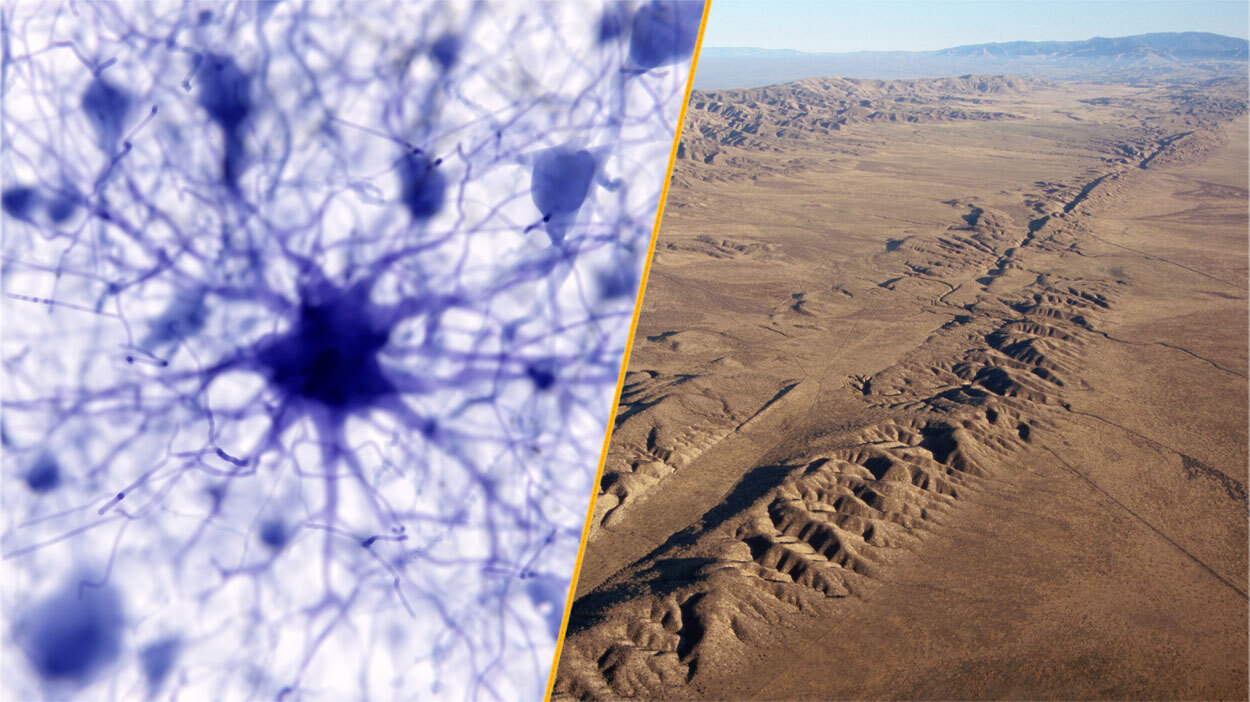This week’s science news saw us looking deep into the cosmos and the depths of our oceans.
To understand the universe today, we need to look back at its earliest epoch, a period about 13 billion years ago known as the cosmic dawn. Until now, space-based telescopes have been our only way to peer back this far, but this week astronomers detected traces of light left by the first stars using a ground-based telescope — a feat scientists previously thought was impossible.
From deep space to the deep ocean, researchers uncovered more secrets about the “world’s richest shipwreck” off the Colombian coast, while other scientists captured a haunting blood-red squid on camera for the first time.
Meanwhile, while researchers have spotted some remarkable things underwater, something that should normally live there recently turned up in a very unexpected place.
Amazing discoveries
From clearing cellular debris to regulating blood flow, star-shaped brain cells known as astrocytes are crucial to keeping your brain healthy, but a new study shows that they could also play a key role in how the brain stores memories.
While neurons were once thought to be the brain’s sole architects of thought and memory, scientists have used machine learning to understand how astrocytes behave when neurons interact with each other to form connections.
They found that astrocytes help store memories through changes in calcium-based signals they send within and between cells, and in turn, these calcium signaling patterns get sent to neurons and tune their activity.
Discover more health news
—New menstrual pad device tracks period blood for signs of disease
—There’s a new blood test for Alzheimer’s. Here’s everything you need to know about it.
—HIV/AIDS: Facts about the viral infection that attacks the immune system
Life’s Little Mysteries

From hunting prey to finding mates and avoiding predators, the ability to detect odors is crucial for survival in the animal kingdom. But which species reigns supreme when it comes to smelling?
—If you enjoyed this, sign up for our Life’s Little Mysteries newsletter
Latest research
Earthquakes are notoriously difficult to predict, but a recent study suggests that California’s faults are overdue for some quakes. By studying the interval between earthquakes on faults in five quake-prone regions with a long geological record, geoscientists worked out which ones were “overdue” for a quake.
While faults in most of these regions were less than 20% overdue, that rocketed to about 45% in the case of the Golden State.
Read more planet Earth news
—Hidden layer beneath Italy’s Campi Flegrei caldera may explain why it’s so restless
—Russian scientists discover a new island in the Caspian Sea — the world’s largest inland body of water
—Earth’s oceans are a ‘ticking time bomb’ as acidity levels enter ‘danger zone,’ study suggests
Also in science news this week
—‘Lost Colony’ of Roanoke may have assimilated into Indigenous society, archaeologist claims — but not everyone is convinced
—IBM will build monster 10,000-qubit quantum computer by 2029 after ‘solving science’ behind fault tolerance — the biggest bottleneck to scaling up
—Ancient DNA from Papua New Guinea reveals centuries of genetic isolation
—Roman-era ‘fast food’ discovered in ancient trash heap on Mallorca
—Alan Turing’s seminal papers, almost destroyed by a shredder, head to auction
Beyond the headlines
Bariatric surgery is an extremely effective weight-loss treatment, but in addition to reducing people’s body weights, the procedure is often tied to improvements in mental health. A new study suggests that these improvements may hinge not on the amount of weight lost, but rather on patients experiencing less weight stigma after the surgery.
“Weight stigma” refers to negative attitudes, biases and beliefs people hold about those with overweight or obesity; some of those biases stem from the misconception that controlling one’s weight is merely a matter of willpower. Among the patients included in the new study, most reported experiencing less stigmatization after bariatric surgery, along with better physical and mental health. A smaller subset of patients continued to experience stigma after their procedures and were then at higher risk of poor mental health and disordered eating.
The study fills a “gap” in our understanding of factors that can affect patients’ outcomes after these surgeries, which are growing more common.
Something for the weekend
If you’re looking for something a little longer to read over the weekend, here are some of the best long reads, book excerpts and interviews published this week.
—The best time to see the Milky Way is fast approaching! How to see our galaxy at its best in June [Skywatching]
—28 gorgeous nebula photos that capture the beauty of the universe [Picture gallery]
—Summer solstice 2025: When is the solstice, why does it happen, and how do cultures celebrate? [Explainer]
—Last minute Father’s Day deals on telescopes, binoculars and cameras [Deals]
Science in pictures
This week we were treated to a part of the sun that no one has ever set eyes on before — the solar south pole. Dipping to an angle 17 degrees below the solar equator, the European Space Agency’s (ESA) Solar Orbiter captured images of the star’s south pole using a large band of visible and ultraviolet wavelengths, bringing to life the tangled web of the sun’s magnetic field and chemical elements as they travel on enormous plumes of plasma.
These new images will enable scientists to better understand solar wind, space weather and the cycle of the sun’s shifting magnetic field.
“Today we reveal humankind’s first-ever views of the Sun’s pole,” Carole Mundell, ESA’s director of science, said in a statement. “These new unique views from our Solar Orbiter mission are the beginning of a new era of solar science.”
Want more science news? Follow our Live Science WhatsApp Channel for the latest discoveries as they happen. It’s the best way to get our expert reporting on the go, but if you don’t use WhatsApp we’re also on Facebook, X (formerly Twitter), Flipboard, Instagram, TikTok, Bluesky and LinkedIn.
